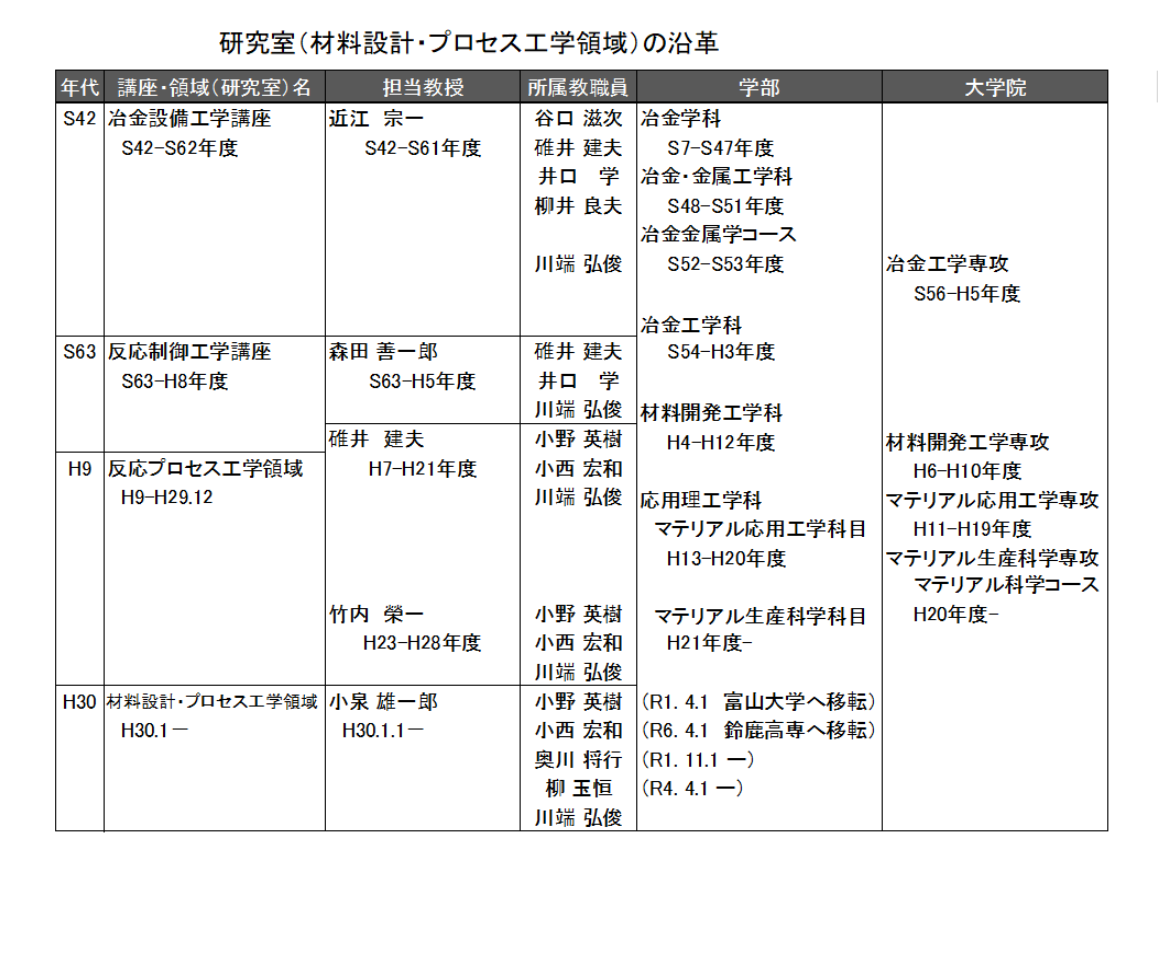Welcome to Koizumi laboratory
The design of materials that exhibits desired functions and the development of their production processes have always been the foundation of manufacturing industries. Nowadays, the establishment of a sustainable society is an urgent global issue, and therefore, the reduction of environmental burdens, such as energy savings, CO2 emissions reduction, and recycling is also an important factor in material design and process development. On the other hand, the digitization of manufacturing processes, as represented by 3D printers, has brought about both new possibilities and challenges to material design and process development. There are various phenomena that can not be predicted or explained by existing science. We aim to contribute to the establishment of a sustainable society and the innovation of our daily life through the creation of new materials by novel technologises, including computer simulations and data analysis for designing materials and optimizing processes via the combination of computational techniques and experimental methods. Also, we aim to systamatize the new scientific knowledge as the metallurgy of new age.

小泉 雄一郎 教授 略歴
- 1995年 3月 大阪大学 工学部 材料物性工学科 卒業
- 1997年 3月 大阪大学大学院 工学研究科 材料物性工学専攻博士前期課程 修了
- 1999年 9月 大阪大学大学院 工学研究科 マテリアル科学専攻博士後期課程 修了(期間短縮)
- 1999年10月 大阪大学大学院 工学研究科 知能・機能創成工学専攻 助手(2007年より助教)
- 2007年 3月 米国マサチューセッツ工科大学客員研究員(2008年3月まで)
- 2010年 4月 東北大学金属材料研究所 加工プロセス工学研究部門 准教授
- 2018年 1月 大阪大学大学院 工学研究科 マテリアル生産科学専攻 教授

当研究室は、平成30年(2018年)1月1日に発足した新しい研究室です。領域名は、それまでの反応プロセス工学領域から材料設計・プロセス工学領域に改称されました。
1968年に近江宗一教授が冶金設備工学の研究室として設立し、1989年に森田善一郎教授により反応制御工学講座として継承されました。その後、1995年に碓井建夫教授、2011年に竹内榮一教授がそれぞれ継承し、大学院重点化に伴う改組により材料エネルギー理工学講座・反応プロセス工学領域となりました。そして、2018年より材料設計・プロセス工学領域として新たにスタートしました。
当研究室では、3Dプリンター(付加製造,Additive Manufacturing: AM)を中心としたレーザーや電子ビームを用いた先進的なプロセス技術や、それらのその場観察・モニタリングの実験研究を行っています。また、フェーズフィールド法、分子動力学法、第一原理計算、熱流体力学計算、有限要素法などのシミュレーションや、データ科学・機械学習を活用した計算研究を融合させることで、先進的なものづくり技術の発展と持続可能社会の確立を目指しています。研究テーマには、冶金学、相変態論、結晶塑性、粉末冶金、輸送現象、溶融凝固など、材料工学の多様な分野が含まれます。
具体的な研究対象材料としては、発電用ガスタービンやジェットエンジンに用いられるNi基超合金などの耐熱材料、Fe基制振構造用超弾性材料、磁石材料、Al₂O₃や機能性セラミックス、航空機・自動車・鉄道などの輸送機器向け軽量構造材料、衝撃吸収用エラストマー樹脂を用いたメタマテリアルなどが挙げられます。特にメタマテリアルの設計では、結晶学や結晶塑性、相転移に関する知見を活用し、「原子模倣(Atomic-Mimetics)」という独自のコンセプトを用いて設計を行っています。この手法により、物質が本来有さない特性を3Dプリント技術によって実現し、希少な元素を使用せずにありふれた元素で高性能な材料特性を引き出すことを可能にしています。これにより、持続可能な社会の実現に貢献するとともに、これまでにない新たな機能を持つ材料を創出しています。
これらの研究を通じて、カーボンニュートラルによる地球環境の維持、超高齢社会におけるロボットとの共生、日常生活の安全性向上、自然災害の影響軽減など、社会の幅広い課題解決に資する材料設計とプロセス開発を推進しています。
